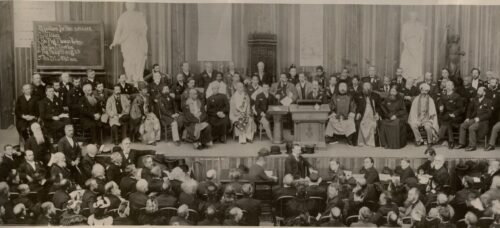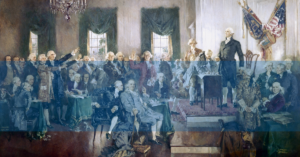
The First Parliament of the World's Religions: September 1893
From September 11 – 28, 1893, the city of Chicago hosted what is now recognized as the first formal interfaith gathering in America. Known as the Parliament of the World’s Religions, the idea for the gathering grew out concerns that the planned World’s Columbian Exposition was excessively materialistic in its focus. As the Exposition planners arranged demonstrations of the technological advances resulting from four centuries of Euro-American civilization, others argued for demonstrations of the moral and spiritual dimensions of human progress. Led by Charles Carroll Bonney, a layman in the Swedenborgian Church, a committee of Chicago businessmen, clergy, and educators organized a series of international congresses addressing a range of progressive goals, from improvements in medicine and engineering to the promotion of fine arts, the advancement of women, and other social reform projects. Of all these congresses, the World’s Parliament of Religions drew the most public interest.
Hope for a Universal Religious Vision
The Parliament occurred in a moment of what may now seem naïve idealism, when its organizers could profess a hopeful universalism that would draw the adherents of many faiths into a single ethical vision. In a paper written to promote the upcoming Parliament, they said it would aim “to unite all Religion against irreligion; to make the golden rule the basis of this union; and to present to the world the substantial unity of many religions in the good deeds of the religious life.” (Charles Bonney, “Words of Welcome,” 21) Similarly, John Henry Barrows, speaking as Chairman of the Parliament in his report of its proceedings wrote:
Religion , like the white light of Heaven, has been broken into many- colored fragments by the prisms of men. One of the objects of the Parliament of Religions has been to change this many- colored radiance back into the white light of heavenly truth.
Although the majority of participants were progressive American Christians, a significant amount of foreign representation at the Parliament exposed American attendees to points of view they had not heard, including the views of Hindus, Buddhists, and those practicing the Shinto tradition.
Read more about the gathering on our sister site, ReligionInAmerica.org.


